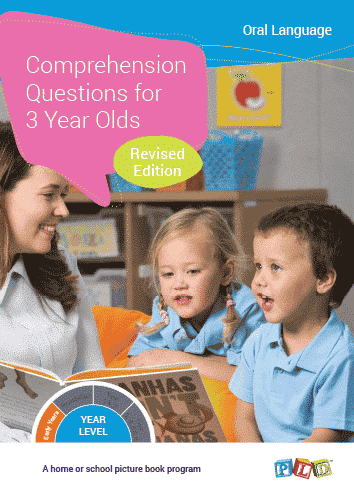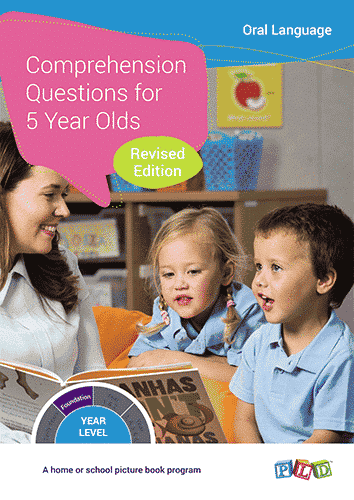Oral Language Programs Integrated with SSP
Oral language, the ability to listen, speak, and understand, is the foundation of literacy. Strong vocabulary, grammar, and comprehension not only support reading, spelling, and writing but also enable students to meet increasing curriculum demands and succeed in later schooling.
Developed with speech pathologists, PLD’s Oral Language Programs use quality picture books and structured oral rehearsal to build these skills. Students are encouraged to “say it before they write it,” ensuring spoken language underpins confident reading and writing. Designed to integrate with PLD’s Structured Synthetic Phonics (SSP), the programs align oral language with literacy instruction – an evidence-based approach proven to maximise outcomes. Effective for both first-language English speakers and EAL/D learners, they provide every child with the foundations to progress in school and beyond.
Navigate to the relevant sections using the tabs below:
In the Early Years, oral language is a key focus, with daily routines that build vocabulary, sentence skills, and comprehension through play-based learning. Instruction takes place in whole-class, small-group, and home programs, with extra support for children with delays to give every child a strong start for literacy and school readiness.
In the Foundation year, oral language is taught alongside SSP to build vocabulary, sentence skills, and comprehension that link spoken language to reading and writing. Explicit instruction uses quality picture books and daily routines across whole-class, small-group, and home programs, with extra support for children with language delays to secure strong literacy foundations.
In Years 1 and 2, oral language continues to extend vocabulary, sentence skills, and comprehension. These skills support fluent reading and confident writing, while preparing students for the growing language demands of the curriculum. Instruction is provided through whole-class, small-group, and home programs, with extra support for children with language delays to keep them progressing.
In the middle and upper primary years, oral language helps students keep up with the growing demands of the curriculum. At this stage, they need to read a wide range of texts with higher-level comprehension and begin transferring spoken language into written work. PLD’s explicit routines grow vocabulary, sentence complexity, and understanding, supporting fluent reading, effective writing, and confident learning.

Early Years
Foundation
Year 1 & 2 Classes
Years 3 & 4 Classes
PLD makes structured literacy simple, practical, and effective – even in small rural and multi-age classrooms. See how PLD can transform literacy in your school.
- What is PLD? Evidence-based programs proven to lift outcomes.
- See it in Action: Watch our lesson block demonstration videos to see SSP using PLD in action.
- Tailored for Your School: Request a quote to match your school’s needs and budget.
- Resources: Use our audit form to plan what is needed for each stage of learning.






























